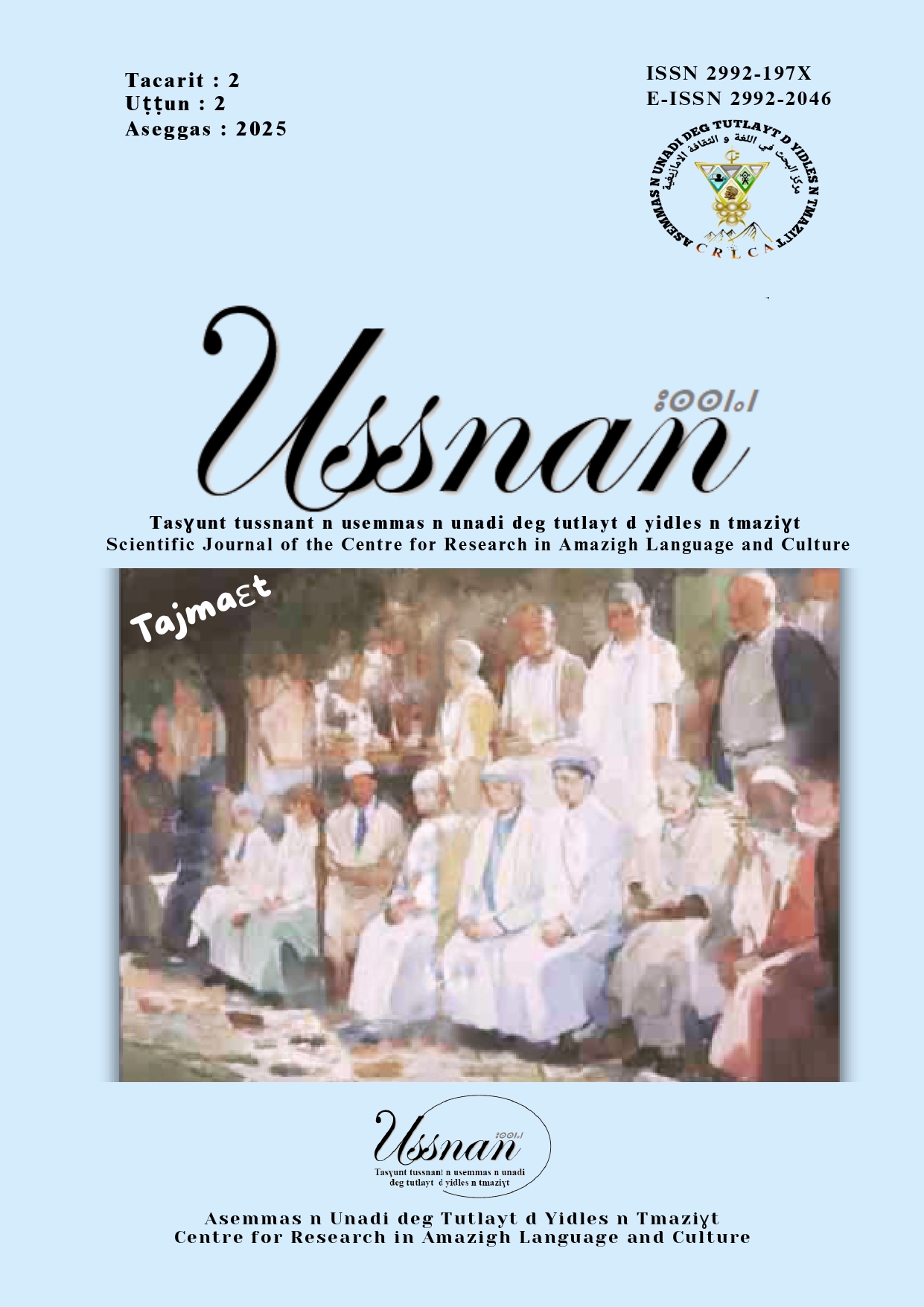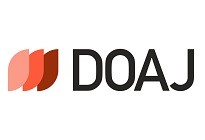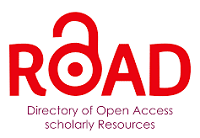Archives
-
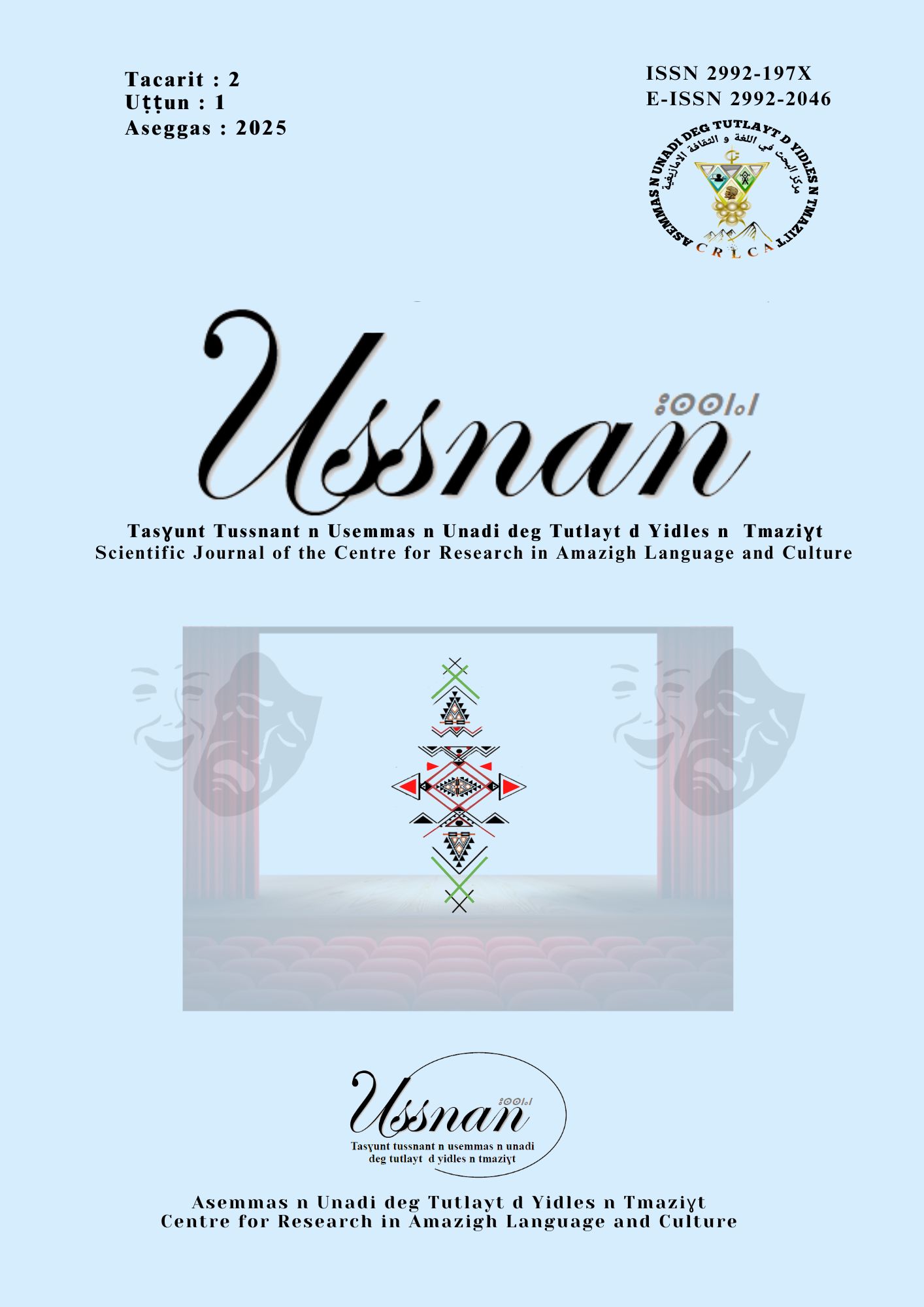
Des pratiques et des enjeux identitaires de la transécriture/adaptation dans le théâtre amazigh.
Vol. 2 No. 01 (2025)Ce numéro de Ussnan traite de la thématique théâtrale, particulièrement du théâtre amazigh, et plus précisément de la transécriture/adaptation comme processus de passage d’une écriture à une autre, avec ce que ce passage suppose comme enjeux culturels, au-delà de la double notion de fidélité/infidélité. Tout un colloque a été consacré à cette thématique au Centre de recherche en langue et culture amazighes (CRLCA), tenu dans le cadre de la treizième édition du FITB (festival international de théâtre de Bejaia). La rencontre a traduit le besoin de la communauté scientifique à prolonger et approfondir la discussion autour du concept de l’adaptation et de son substitut, la transécriture, et de réfléchir davantage sur la complexité et la pertinence des concepts. Par un bouquet d’articles, qui se complètent par leurs approches distinctes et les disciplines différentes de leurs auteurs, ce numéro de Ussnan apporte des lectures croisées de choix sur la complexité de la transécriture/adaptation et sur les opportunités qu’offre ce processus pour servir l'identité amazighe.
Dr. Kamal Medjedoub
-
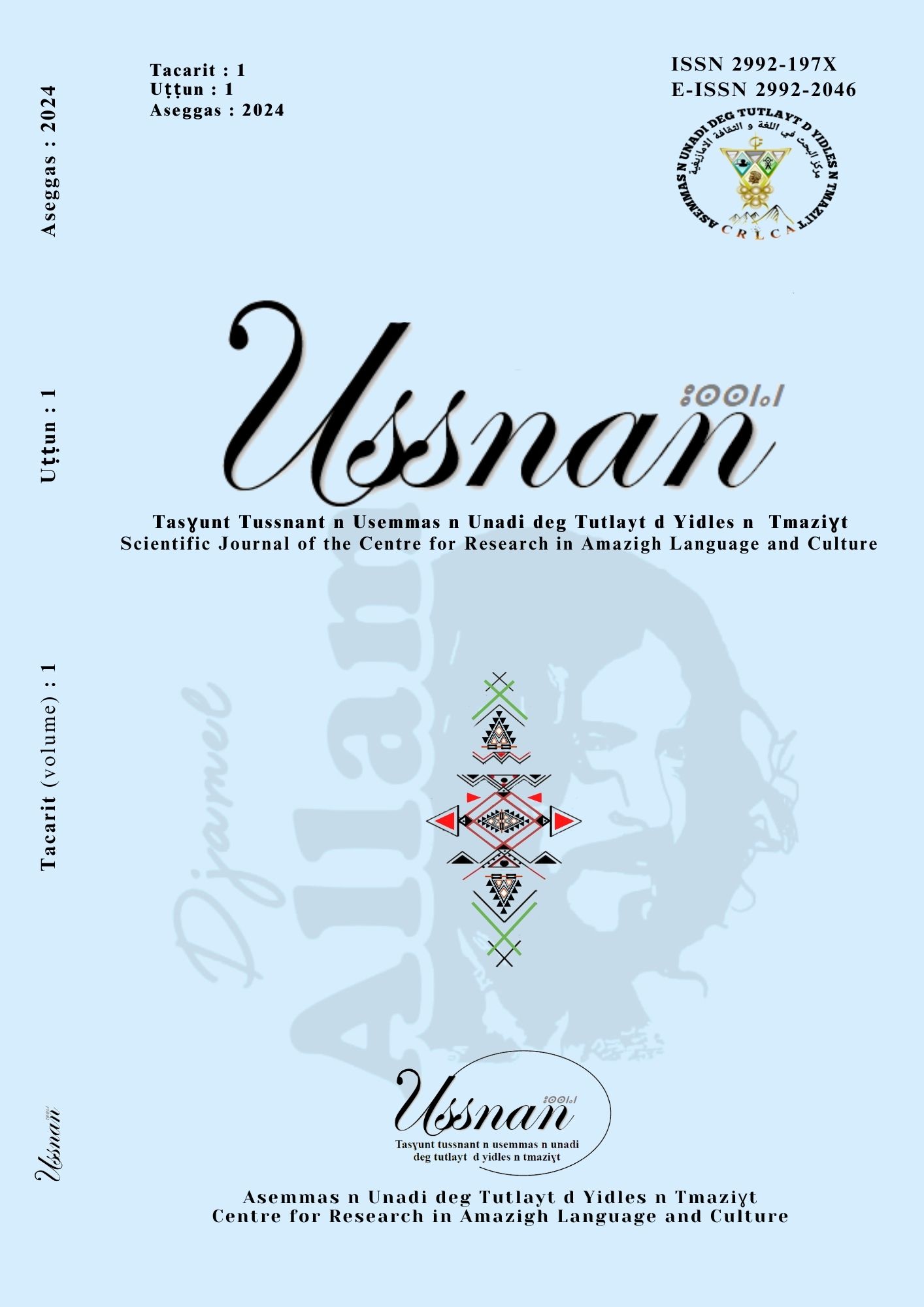
Djamel Allam : une œuvre plurielle à interroger
Vol. 1 No. 01 (2024)The plural work of Djamel Allam was examined, on September 12 and 13, 2023, by researchers and teacher-researchers from several university and research establishments in the country to highlight the capacity of sung poetry to say and to be said. The Center for Research in Amazigh Language and Culture made it possible, in the first national conference of its kind, to place at the center of reflection the work of Djamel Allam in its aesthetic-artistic dimension, but also poetic, to understand the effort of creation and grasp the depth and interstices of the text. Between what we can listen to or what we can read, research has this ability to give body and meaning to what is not always palpable and perceptible. This led, for example, to invoke the theory of polyphony to identify the implicit and the voices that carry it in songs, explore their universal dimension, focus on their linguistic characteristics in the light of sociolinguistics, and humorous, satirical, ironic and derision expressions, propose songs for school programs and engage in a poetic reading of the narrative songs of Djamel Allam. We also did not fail to take a closer look at the multilingual particularity of the work and the traditional Kabyle soul which inhabits and animates it. Several levels of analysis are engaged around a multidimensional work which draws from the crucible of literature.
Dr. Kamal Medjedoub, président du colloque « Djamel Allam : une œuvre plurielle à interroger »
-

Les symboles berbères : Un patrimoine entre perdition, transition et valorisation
Vol. 1 No. 02 (2024)This issue of the Ussnan magazine is largely devoted to the exploration of the rich and plural Amazigh symbolic universe, a subject which was the subject of a national conference. Symbols, in their diversity and evocative power, have always occupied a central place in human experience. As expressions of collective consciousness, beliefs, fears and aspirations, they embody the deep dynamics that shape societies throughout history. Whether they are tattoos, ornamental patterns on pottery, textiles or jewelry, or even symbols engraved on walls and everyday objects, these signs testify to a deep relationship between the individual and their environment, between the past and the present, the spiritual and the material. Since prehistoric times, man has used these symbols to inscribe his presence in the world, structure his beliefs, rituals and practices, and mark his territory, whether physical, social or spiritual. Through them, societies have woven a visual language that goes well beyond simple representation: it is a means of giving meaning to the invisible, of structuring human relationships and of understanding the world. Through the six contributions that follow, this issue seeks to highlight contemporary research on Amazigh symbols, at the crossroads of memory and renewal. The authors of the various articles explored symbols, their uses and their resilience within cultural practices which oscillate between perdition, transition and valorization.
Pr. Hayat Guenfissi, president of the conference “Berber symbols: A heritage between perdition, transition and valorization”

